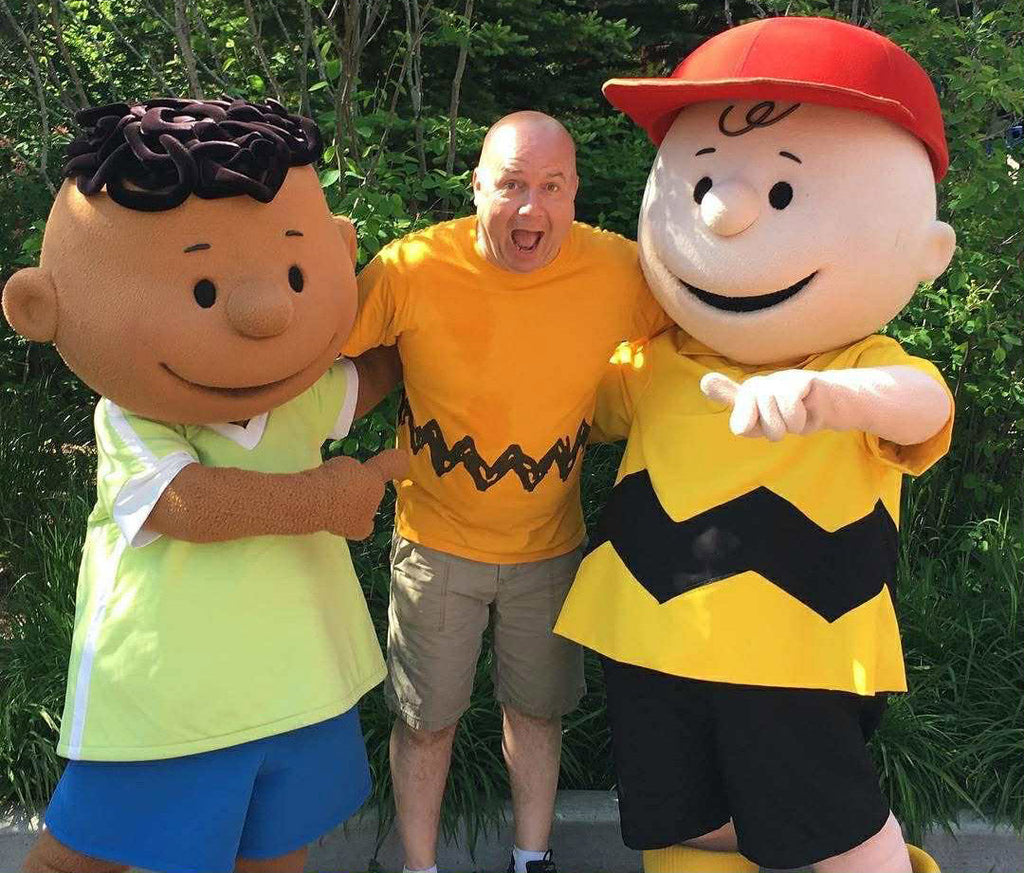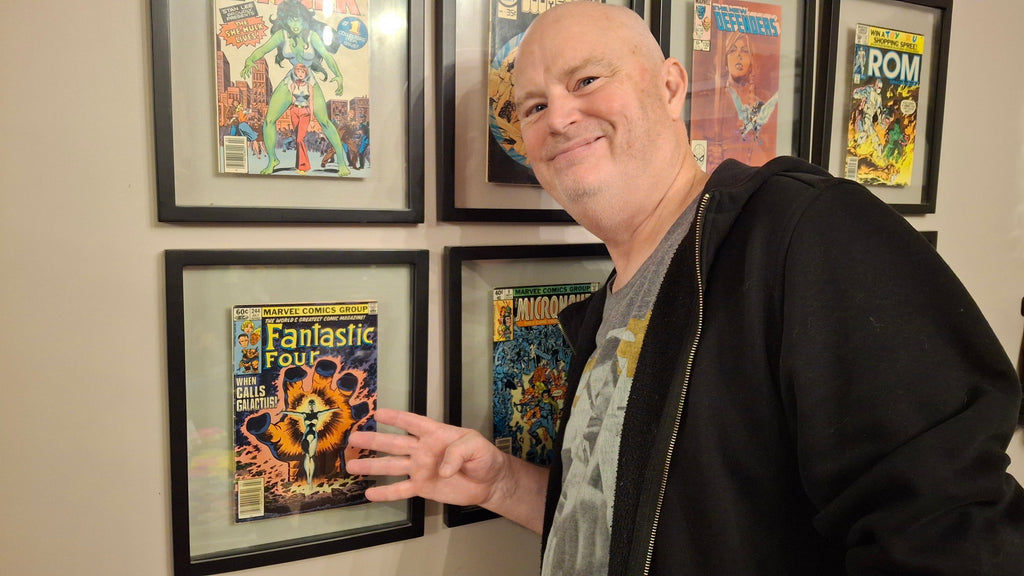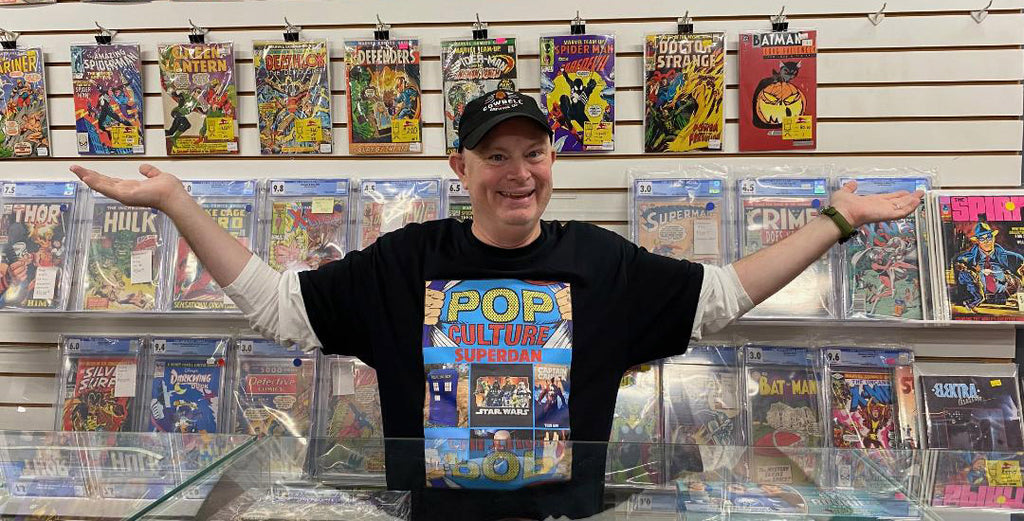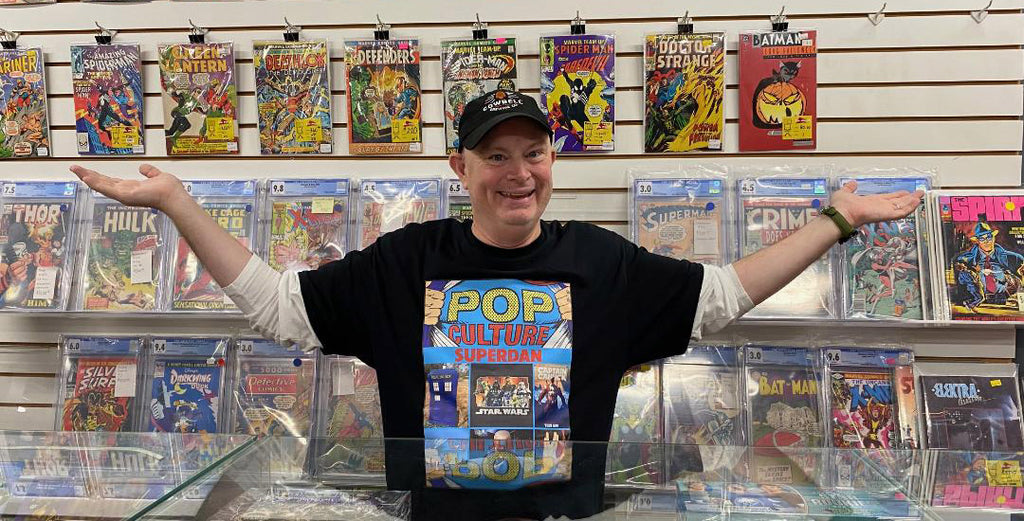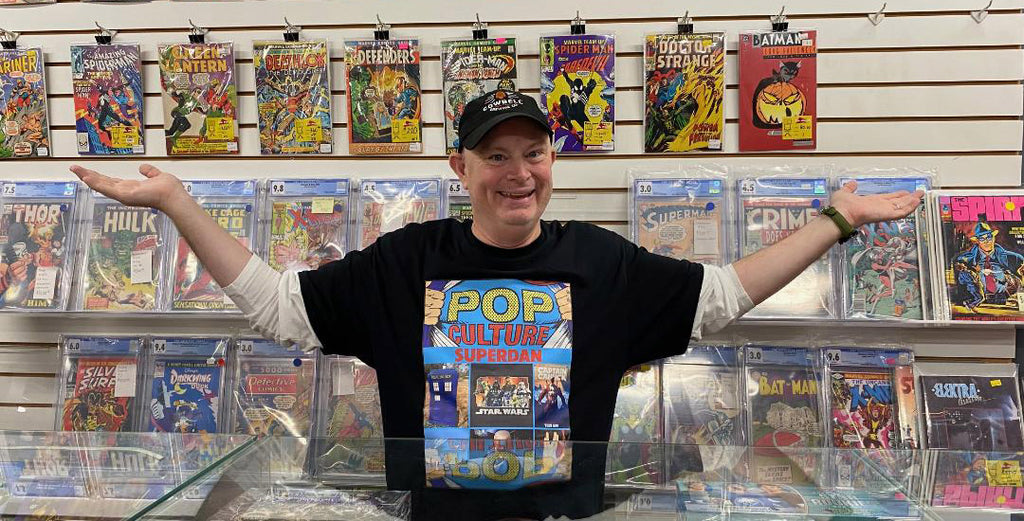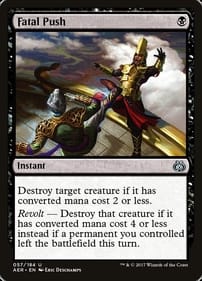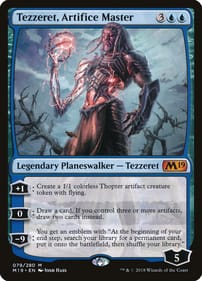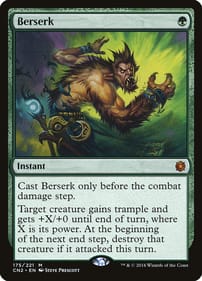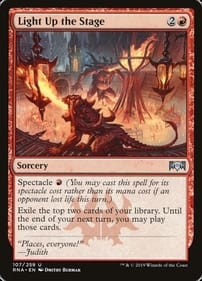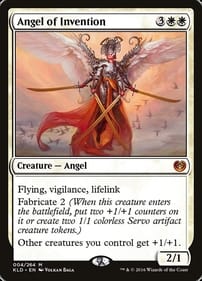Same Great Cosplay, New Venue for Forest City Comicon
By Dan Brown No, that’s not me in the photo above – it’s another bald, middle-aged white nerd. The guy in the sawtooth Charlie Brown shirt is Ian Tyson. Like me, he’s a huge fan of pop culture, including such superheroes as Superman – Tyson has already seen this summer’s movie about the Man of Steel five times! Tyson is also. one of the key organizers for Forest City Comicon. If you attend the annual celebration of all things geeky this Sunday, you’ll likely see him hosting panel discussions. The timing for F3C this year – two days after Halloween – is no accident, he tells me via Facebook message. “It’s one of the reasons we chose this particular weekend at (Best Western Lamplighter Inn), with the notion being this Halloween, keep your costume on,” he explained. “I think Halloween has turned into more than just a day. It’s a whole weekend. So why not continue the celebration right into Sunday?” Forest City Comicon has always had a thriving cosplay scene. Tyson isn’t sure the exact reason. “We have a lot of great connections with our board to the cosplay community and that may certainly play a part in it. (The con) draws out really great creators and artists and people who just make incredible costumes,” he added, noting the afternoon cosplay contest attracts “everybody from the masterful ones to the little kids that are trying it out for the first time.” One outfit that stands out in his memory is from 2017, when one attendee dressed up as DC’s Hawkgirl. “She stood on stage and extended the (retractable) wings to their full span, which was significant!” Tyson recalled. “It was really incredible.” Tyson has been involved with every Forest City Comicon since it launched in 2014 at Centennial Hall. With the shift to the Lamplighter, this Sunday will be the first F3C to be held outside of downtown London. “The event features special guests, costumes, artists, exhibitors, board games, video-game tournaments, panel presentations, and more,” Tourism London boasts of the one-day show. “We’re very excited at the prospects of what’s gonna happen this year at the Lamplighter. I think the vibe will be lighter and more fun. It’s warm. It feels like summertime in there, and it’s just a great space,” Tyson said. “I think that we truly have something for everyone, and have put a really great show together this year.” Something that has been a staple of past editions of Forest City Comicon is to bring in not only actors, but also celebrity guests other than those with familiar faces. Sure, there have been performers like 2017’s Billy Boyd, who played Pippin the Hobbit in the Lord of the Rings movies. But also part of the meat-and-potatoes for Forest City Comicon have been the talented individuals who fill out the crew and cast of motion pictures and TV franchises, like voice actor Billy West, who came to London in 2016. This Sunday will see a visit by David Barclay, the puppeteer who helped bring Star Wars characters such as Yoda the Jedi Master and Jabba the Hutt to life. Barclay is also known for “all things Muppet,” Tyson says. Oh yeah, and Cocaine Bear is coming, too! That would be Alan Henry, the motion-capture artist who played the titular coked-out beast two years ago. He’s also played King Kong, as well as characters in the Marvel, DC, Avatar, Lord of the Rings, and Minecraft universes. “From our experience doing these cons, motion-capture actors are fantastic guests that have great stories,” Tyson said, adding mo-cap performers “have stories to tell. They have been on the sets of these big things that we love, major projects, and been there doing the heavy lifting.” “Plus, what I have found is they all very much seem to be fans of the work they are doing. They are into it and they love meeting fans of that work, too. It makes for great back-and-forth interactions. They are just good people and are a lot of fun.” You will also see me at Forest City Comicon on Sunday. But don’t worry, folks, I won’t feed the Cocaine Bear! Dan Brown has covered pop culture for more than 33 years as a journalist and also moderates L.A. Mood’s monthly graphic-novel group.
A Fantastic Four Primer
By Dan Brown This column is for those readers who are considering going to see The Fantastic Four: First Steps but don’t know a lot about comics lore. Here’s your primer from an old FF fan. But be warned – I haven’t seen the movie (it lands in theatres Friday), so I can’t tell you exactly how much it differs from the comics. The first issue of Fantastic Four came out in 1961, and is generally considered the launching point for the Marvel Universe. It caused a sensation, making the rest of the Marvel lineup possible. Such heroes as Spider-Man and teams like the Avengers followed in the wake of the FF’s success. The title had a sci-fi flavour and introduced (or at least popularized) a number of superhero innovations. The main characters were Reed Richards, whose pliable mind is matched only by his elastic body; Sue Storm, who is Reed’s transparent wife, and is also able to project force fields; the hothead Johnny Storm, who can burst into living flame; and Ben Grimm, Reed’s college buddy, who looks like a pile of orange rocks. One of the main innovations is that while the FF have superhero names (Mister Fantastic, Invisible Woman, the Human Torch, the Thing), they do not have secret identities. Originally a group of astronaut explorers, they operate with the general public knowing their real identities. From the movie clips I’ve seen online, it looks as though the new film’s makers are leaning heavily into the FF’s status as a family. This is what sets them apart from other superhero teams like, say, the X-Men. And while they do have uniforms, they wear them only on the job. Another innovation is, as with so many families, the Fantastic Four is a dysfunctional one. Although Reed is the FF’s leader, they are constantly squabbling about something. This tension exemplified Marvel’s new breed of superheroes with real-world problems. This was all in contrast to DC’s emotionally constipated heroes – Superman and Batman among them. It was the brand difference that eventually put Marvel on top of the comics sales charts. The FF got their powers after a freak rocket accident. These aren’t necessarily considered a blessing, particularly by Grimm, who is a self-loather. The reluctant superhero was a relatively new concept at the time. Their adventures were cosmic in scope, and thanks to co-creator Jack Kirby’s pencil work, had a trippy vibe to them. The enemies they fought include Annihilus, ruler of a dimension called the Negative Zone. And the Sub-Mariner, who lorded over the Earth’s oceans. Doctor Doom was an old college rival of Mister Fantastic who had mastered the mystic arts en route to inventing a time machine. No villain better demonstrates the raison d’etre of the FF than Galactus. More than merely evil, Galactus is a planet-eater whose existence as a force of nature puts him beyond human morality. Our heroes have cheated him out of devouring Earth many a time. Again, judging from clips on the web, it looks as though Galactus will be the main adversary appearing in the new motion picture. Another innovation has the FF living in a real city, New York, not an anonymous one created for the comics. Kirby’s run as penciller on Fantastic Four ended after almost a decade. Since then, different artists have worked on the title, including sometime Canadian John Bryne whose time as FF artist/writer is considered by many to be second in importance only to Kirby and Stan Lee’s run. The team has had substitute members over the decades, always returning to the same core foursome. The comic, similar to any long-lived title, has had its creative ups and downs. There have, you may have heard, been previous Fantastic Four movies – none of them all that great. I thought the 2005 adaptation was a solid B movie, but suffered from how cheaply it was made. How low was its budget? They didn’t even have enough money to pay for the effects showing Grimm transforming into the Thing. Talk about made on the cheap. Dan Brown has covered pop culture for more than 32 years as a journalist and also moderates L.A. Mood’s monthly graphic-novel group.
The Marvel Universe: An appreciation
By Dan Brown Did you ever have one of those posters showing all the Marvel superhero characters gathered together in one place? Over the decades, successive generations of Marvel artists have depicted that crowded scene – row after row of colourful do-gooders, a cast of literally thousands, standing at the ready to fight evil.. Whether this heroes’ gallery was drawn by Jack Kirby, John Byrne or Michael Golden or someone else, my jaw hits the floor every time I see it. I am in awe of the creative energy it must have required to come up with backstories and costumes for all of them. So what I want to do this week is take a moment to praise the folks at Marvel for doing such a good job of churning out one interesting character after another since 1939. This will come as no surprise to regular readers who know I was raised on Marvel Comics in the 1970s. (And don’t worry, DC fans, I’ll do a tribute to that company’s stable when I figure out the right way to do it.) When it comes to being prolific, no other comic publisher has the track record Marvel does. What a riot of invention! What a unique assemblage of talent! What a big bang of creativity that set and kept the Marvel Universe in motion! The Marvel Universe is what results when the right talented people get together and are allowed the freedom to let their minds wander. It’s an example of what no less an authority than Willy Wonka calls “pure imagination.” Jack Kirby and Stan Lee – who launched such comics as the Avengers, the Fantastic Four, the Incredible Hulk and the Uncanny X-Men – were undeniably the creators among creators at Marvel. I don’t want to get too much into the weeds on the question of which man possessed the real vision, so let’s just state for our purposes here today that Kirby and Lee combined are among the greatest and most prolific American originators of characters, in the same league as Walt Disney, Jim Henson, Dr. Seuss and Mark Twain. It’s true the different creative teams at Marvel were motivated by economic necessity. They never met a trend they didn’t try to plunder, like the disco craze. No sooner, it seemed, had Studio 54 opened than Marvel came up with the mutant Dazzler – who has all the powers of a disco ball! When kung fu movies likewise hit it big, Marvel answered with Shang-Chi and Iron Fist. Sometimes the plundering was done for the right reasons, as when characters like Black Panther and Power Man were devised to give black readers heroes of their own. Although some fans have by now grown weary of the offerings from Marvel’s movie division, the studio hasn’t even begun to scratch the surface of the vast library of characters it owns. No one would call the comic-book Agatha Harkness a major Marvel character, but there’s currently an entire series streaming right now devoted to her solo adventures. A series about Wonder Man – another B-list character – is set to debut next year. As someone who appreciates and values imagination, I can’t help but be deeply impressed by how productive Marvel has been over the decades, creating a surplus of diverse characters who have now become recognized around the world. And yes, the chumminess of the Marvel Bullpen was likely an illusion created by Lee to help infuse the Marvel brand with an air of fun, but at the end of the day we are still left with what all of those artists, writers, colourists, letterers and editors wrought: An entirely original group of compelling heroes. There’s literally a character for everyone. I stand in awe. Dan Brown has covered pop culture for more than 31 years as a journalist and also moderates L.A. Mood’s monthly graphic-novel group.
Deadpool & Wolverine Isn’t a Sure Bet
The superhero combo may not be able to win over movie goers according to Dan Brown. He explains how movie trends, ratings, and more won't help the studio in this week's column,
Read The StoryLooking Back at 2023: The Year in Comics
By Dan BrownThe categories are arbitrary. My picks are open to debate. You likely have come to totally different conclusions.That said, here are the highlights – according to no one but me – from the last year in the comics biz.Villain of the year: The hip dragon from Scott Chantler’s Squire & Knight graphic novel, who sounds to my ear like a beach bum. When attacked by a self-promoting paladin, he responds in a laconic way: “Pretty rude, man.”Hero of the year: Common sense, as portrayed in the same book, which comes from the Stratford-based comic creator. It outlines the adventures of a medieval do-gooder and his young apprentice, who refuses to jump to conclusions based solely on circumstantial evidence. Turns out common sense is actually not that common. Writer of the year: BealART grad Lynette Richards, for Call Me Bill, an evocative tale delving into a long-standing East Coast maritime mystery. Richards gives the title character, an actual mariner, a plausible back story, in the process paying tribute to someone who was ahead of the times. Artist of the year: London’s D.S. Barrick for his work on Murgatroyd & Nepenthe, which he describes as a tale of two travelers trekking through the hinterlands of the imagination. It’s a visual feast not to be missed.Comic of the year: Crimson Fall: Lambs of God. This Derek Laufman mini-comic about two mismatched characters, a cleric and a knight, can be read as a straightforward story about demons in a dungeon, but underneath that is a much broader debate about the limits of reason to explain the world around us.Graphic novel of the year: Palookaville No. 24, particularly the latest instalment of Nothing Lasts, Seth’s autobiography-in-the-making. He calls attention to the constructed nature of his life story, encouraging the reader to think about the way memory becomes fiction. Or was it always fiction? (I suppose Seth’s latest is technically a comic, but it has a hard cover so it qualifies as a graphic novel in my mind. It’s not like Seth is publishing it monthly.)Panel of the year: The final panel of Are You Willing to Die For The Cause?, the Chris Oliveros book about the FLQ’s early days. On page 134, he shows the police celebrating the demise of the FLQ – just as the separatist terrorists were about to embark on their bloodiest exploits. “Hurrah!” the officers cheer. Bitterly ironic. The same book features a panel on page 123 of an FLQ hideout littered with empty Labatt 50 bottles. It doesn’t get more Canadian than that!Cartoon of the year: A New Yorker cartoon by Ellis Rosen depicts God, wine glass in hand, explaining to an angel helper why heaven looks different: “I had the vastness of creation replaced with hardwood floors.” Originally published two years ago, it came up in my New Yorker desk calendar on Dec. 1.Understatement of the year: Bob Iger, Disney CEO, said the glut of Marvel content online and in movie theatres has “diluted focus and attention” among fans of the company’s superheroes. (The Marvels, which I’m told is a strong movie, debuted with less than $50 million at the box office on its opening weekend, a first for a Marvel release.)Comeback of the year: Michael Keaton reprised his role as the Dark Knight in The Flash. By many accounts, the funnyman was the best thing about the motion picture, which served as the swan song for the current phase of DC’s big-screen superhero adaptations.Disappointment of the year: Marvel introduced Doctor Aphra in its Darth Vader title way back in 2015, yet still no movie or show built around the amoral archeologist. At this rate, the gonk droid will have its own Disney+ series before Aphra.Dearly departed: Among the comic creators who died this year are Al Jaffee, Joe Matt, Keith Giffen and Chris Browne. I once had a lovely conversation with Browne about how he continued the Hagar the Horrible newspaper strip after his father retired. Just a really nice dude to interview. The world is poorer without these guys.Comic blog/website/web presence of the year: I continue to enjoy a Facebook group seemingly titled with me in mind, Old Guys Who Like Old Comics. Jeremy Kirby is also doing yeoman’s service preserving his grandfather Jack Kirby’s legacy with his group the King of Comics.Comic journalism of the year: The book Dirty Pictures by Brian Doherty is a history of the underground comics scene in the U.S, the surprising part being how much of an impact these often-crude publications made on mainstream comics culture. It shows what can be done in the medium without an industry censor.Now, over to you . . . what were the comic highlights for you in 2023? I want to hear all of your picks in the comment box below. Feel free to invent some categories!Dan Brown has covered pop culture for more than 31 years as a journalist and also moderates L.A. Mood’s monthly graphic-novel group.
Pedro Pascal a Meaningful Choice to Play Reed Richards
By Dan BrownDepending on which news source you believe, Pedro Pascal may be the next actor to play superhero scientist Reed Richards, the pliable leader of the Fantastic Four also known as Mister Fantastic.Just the fact the big brains at Marvel Studios are talking to Pascal tells us two things.First, Marvel wants to get the next Fantastic Four movie right.Second, the Marvel brain trust realizes they are in a slump.If Pascal does get the part, it would be a good sign for the many millions of Marvel movie fans on this planet. The Chilean-born performer is known for his acting on shows like The Mandalorian, The Last of Us, and Game of Thrones, as well as for giving Bad Bunny a helping hand during the musician’s Saturday Night Live appearance last month. In addition to being hugely popular, Pascal is immensely talented. It’s no surprise Marvel’s bosses want to tap into his star power. He is one of the few actors who could pull off the role; Richards is not exactly an exciting character, being part genius and part rubber band. Pascal would bring excitement, humour, and gravity to the part.Pascal can take comic-book dialogue – “We’ve got to get to the bottom of his strange powers, learn how to control them. After all, Sue, he’s our only son” – and sell it. The fact he brings Star Wars enthusiasts, gamers and other fandoms to the table is an added bonus, and I’m sure part of the calculus for why Marvel is apparently in discussions with him.Longtime Marvel fans know that the Fantastic Four is, well, a tricky property to get right on the silver screen. If I am counting correctly, there have been four attempts to make movies based on the title Stan Lee dubbed “the world’s greatest comic magazine.”The Roger Corman-directed first shot wasn’t even meh enough to get a video-cassette release. The second and third were B movies constrained by their low budgets, and the most recent attempt is considered an abomination in the sight of the few fans who paid to see it.Is a new Fantastic Four movie a special-effects picture? Is it a family story? Is it a comedy or a drama? It’s all of those. And no filmmaking team has yet been able to get the tone of the Fantastic Four right. Even more significantly, adapting FF for the big screen means bringing one of pop-culture’s great villains, Doctor Doom, into the mix.Nor can anyone ignore the context these reported talks are taking place in. The Marvels, the latest feature film from the studio, had the worst debut in Marvel Cinematic Universe history when it landed in theatres earlier this month, failing to clear $50 million in its opening weekend. It also had the worst second weekend in MCU history, despite strong word of mouth.Not all of this can be blamed on the recently concluded strike by Hollywood actors, which prevented stars like Brie Larson from hitting the talk-show and podcast circuit to drum up interest in the motion picture. Superhero fatigue is a real thing, but don’t take my word for it. I wrote in the spring in this space about how Disney CEO Bob Iger feels the Marvel brand has been “diluted” over the pandemic by the release of too many streaming shows. Think Hawkeye, Falcon and the Winter Soldier, Loki, Moon Knight, She-Hulk and on and on. Fantastic Four is one of the richest potential mines left for Marvel Studios to plunder. The downside of getting it wrong is huge. The potential upside? If they get it right, a Fantastic Four movie starring Pedro Pascal just might save the company. Dan Brown has covered pop culture for more than 30 years as a journalist and also moderates L.A. Mood’s monthly graphic-novel group.


